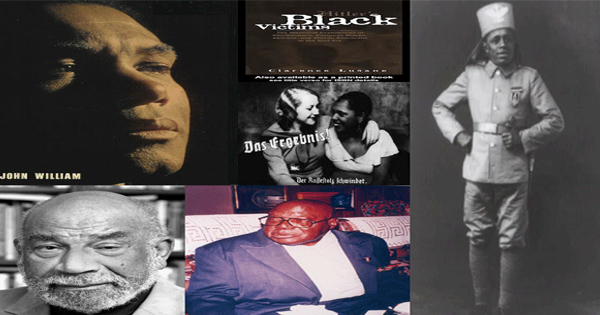
Many blacks from Africa, Caribbean or African Americans were deported to the Nazi camps. Most of the time, prisoners were incarcerated for resistance activities. But there are some exceptions. Following numerous discriminatory laws in Germany, a black who was dating a German woman and was not discreet enough could be found quickly in the concentration camps. But how was the life of blacks in the camps? Do they suffer racism against other prisoners? Were they treated in the same way as other prisoners? Nowadays, it is difficult to know how many blacks were deported to Nazi camps as the Germans counted them according to their original nationalities. Serge Bile talking about a ballpark figure between 10,000 and 30,000 blacks died in the camps. This article aims to pay tribute to all the victims and heroes forgotten by relating the hell they lived in Germany.
The black victims of the holocaust in the Nazi camps Germany
1/ The hell of the concentration camps
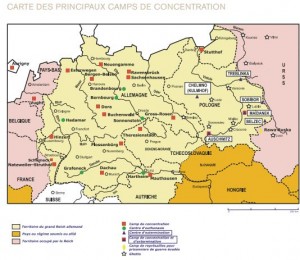
The treatment of blacks in the concentration camps was the same as for the Jews. The difference being that blacks were considered “subhuman subhuman” between ape and the Jew. For them, they were beasts.
- In the Neuengamme concentration camp
Neuengamme camp is located in open country, near Hembourg. At Neuengamme concentration camp, there were about 10 or 12 black. Only 3 or 4 people survived the hell of the camp. But who are the survivors?
- JOHN WILLIAM
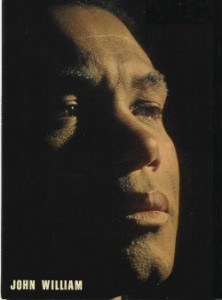 Ernest Armand Huss alias John William is an Ivorian-French singer who was deported at the age of 22 years in the Neuengamme camp. It bears the registration number 31 103. The reason for his deportation, is that he was accused of sabotage at Sagem factory at Montlucon where he was a worker. John tells William that there were between 10 and 12 blacks in the Neuengamme camp.
Ernest Armand Huss alias John William is an Ivorian-French singer who was deported at the age of 22 years in the Neuengamme camp. It bears the registration number 31 103. The reason for his deportation, is that he was accused of sabotage at Sagem factory at Montlucon where he was a worker. John tells William that there were between 10 and 12 blacks in the Neuengamme camp.
He said that blacks were herded together. Upon arrival, the German jailers were amazed by the color of their skin. They began to touch their skin to make sure it does not rubbed off. While in camp, John William worked as a precision engineer. The Germans were amazed by his skill and expertise. They were not used to seeing a black who could read and understand highly technical plans. Thanks to his expertise, he was a little better treated. His religious faith helped him to hold and withstand in the Neuengamme camp.
_Cold. Indeed, there were terrible winters in the Neuengamme concentration camp, as an icy wind blew constantly. Many blacks died because they were struggling to cope with the cold. Temperatures were changing too compared to their home country.
_Forced labor. The black working in quarries. Thousands of men down there to extract granite blocks.
_Inmates were killed and buried on the spot when they were exhausted.
- DOMINIQUE MENDY (1909-2003)
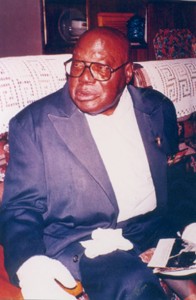
Dominique Mendy was deported to the Neuengamme camp on 24 May 1944. It bears the registration number 32 090. At the time, he lived in Bordeaux and was part of the resistance. Betrayed by his own, he is arrested and taken to Neuyengamme camp. Camp life was very difficult. A day without reason, the soldiers rouent 50 shots. They call him “Bimbo” is a derogatory term in German to refer to blacks. Dominique Mendy is then passed to beast. . He plays Kapo (supervisor of a Nazi camp) into believing that the French have won Dakar and shipped to France. He tells them he has no job and he knows that digging the earth and sweep. He also says that he is afraid of the whites and that his only desire is to return to his country. Luck is with him, for the Kapo was born in Cameroon. He takes pity on him and hired him as a servant to prevent him from working outdoors where temperatures range between 0 and less than minus 10. The wife of Kapo sometimes brings him an apple or a pear that s’ eager to share with his comrades. The SS took him for a mental and remained constantly humiliated. Dominique is strong and takes a humorous humiliation of SS.
For example, Dominique Mendy was… “The SS teased wondering why you’re black, I told them I’m Black This is because there is no soap here to wash So he gave me a piece of soap “
He could get small favors such as soap, saying he needed soap to clean his black skin. In addition, through its work orderly, he could retrieve small pieces of bread he shared with other inmates. He thus saved the lives of his companions. In the camp Neuengamme, Dominique Mendy loved to discuss with his Senegalese friend Sidi Camara. Both from Senegal, they loved to talk in their native language Wolof. This allowed them to escape a little and imagine a little in their country.
The difficulties in the camp
_ Constant humiliation made black people.
_Lack of food, cold.
_Daily beatings.
_The Camp atrocities. Indeed, the German officers thought Dominique Mendy was mentally retarded. They let see how they murdered babies, children and mothers who arrived in the camp. Only men were spared, but some unlucky were sent in special blocks to be a guinea pig.
Dominique Mendy remained 1½ years in the Nazi camp. On 7 April 1945, he is saved by the Danish Red Cross took him to Copenhagen. For his generosity, courage and dedication, he received the Legion of Honour. He died on 24 June 2003 in Dakar.
- SIDI CAMARA
Sidi Camara is the third survivor of the Neuengamme camp. He was born March 3, 1902 in St Louis, Senegal. Sidi Camara was deported along with Dominique Mendy, May 24, 1944. And, it bears the registration number 31 810. Camara spent his time chatting in Wolof with his friend Dominique Mendy. The terms “muñel, Yalla am na” (meaning have patience, god is great) kept coming up in discussions between Sidi and his friend Dominique Mendy. Shortly before the end of the war, he will be transferred to the Bergen Belsen concentration camp. Between 21 April 1945 and 4 May 1945, Camara died at the camp’s liberation. According to archivist Memorial Bergen-Belsen, Sidi Camara was buried in a mass grave in Bergen-Belsen shortly before the liberation.
- ISIDORE ALPHA
Isidore Alpha is of Martinique, born 16 December 1987 in the district of La Trenelle. Before the end of summer 1940, he made propaganda by distributing leaflets and newspapers for the resistance. 1942, Isidore Alpha comes in a movement of “defense of France” founded in 1941 by Philippe Viannay. He participated in actions of sabotage, manufactures false identification and continues to distribute large quantities by the newspaper “Defense of France”. September 16, 1943, Isidore Alpha stopped at Charenton, to Nicolats institutions by French police who collaborated with the Gestapo. First, he was interned in the camp Voves (Eure et Loir), then at Compiegne Royallieu camp April 10, 1944, only to be deported to the Neuengamme camp (Germany) May 21, 1944.
Isidore Alpha is assigned to outside commando Wöbbelin where he will die of exhaustion, March 27, 1945. We will assign Isidore Alpha mention of “death to France” will be given by the Minister of hosts 1 July 1947. It will also receive the honorable mention “death in deportation” 6 April 1987. You can find his name on the memorial plaques of the dead for France in the 1939-1945 war in the Saint-Germain church from close to paris 6th.
- AMBROISE BILAN
Ambroise Bilan is from Martinique, born December 7, 1906 in Fort-de-France. He learned the cooper craft. October 1, 1927, is incorporated in the 22nd Colonial Infantry Regiment in Hyeres in the Var. 1 year later, he was assigned to the reserve of the Company of Martinique. Ten years later, he moved to Paris with his wife Edmee Maraval. He companion for France against Germany until June 26, 1940 and was discharged the following August 1st. He retired to Paris and resumed its cooper craft. Following a denunciation, he will be arrested by German police on the night of 7 to 8 November 1943. He will be imprisoned in the prison of Cherche-Midi. Then he will be transferred to Royallieu camp at Compiegne. July 31, 1944, Ambroise Bilan will be deported to the German camp Neuengamme. In this convoy, we can count 2062 inmates. Ambroise Bilan will receive the number of registers 34 720. Life in the camp is difficult. Before the end of winter, he was deported to the “rest camp” Bergen Belsen, which is over 120 km south towards Hanover. At that time, there was a great Belsen typhus epidemic in 1945. Ambrose balance will be discharged from the Belsen camp. It had to be admitted to the hospital of Salpetriere in Paris. Unfortunately, he died July 22, 1945 at 2 in the morning, 38 years and 7 months.
Ambroise Bilan will receive the words “died for France” 29 May 2012 by the decision of the Director General of the National Office of Veterans.
- PAUL PINTARD
Paul Pintard was deported June 7, 1944 at Neuengamme, registration number 34333.
- DOUDOU DIALLO and GAMBIEN COCO SAMBA NJE
Dominique Mendy spoke Doudou Diallo and Gambian Coco Samba Nje in the TV show “Witnesses of our time. We did not find traces of them in the archives of Neuengamme. Doudou Diallo was born in Senegal Mékhé February 9, 1918. He joined the resistance in Britain.
- In the Ravensbrück concentration camp
Ravensbrueck camp was the first camp opened in 1939 by the Germans. It is a camp especially for women and children. We can give an approximate number between 132 000 in total, 90,000 never returned. According to Ginette Clement survivor, it’s an extermination camp. Each person was to die by hunger, cold, labor, beatings, and humiliations medical experiments at any range. When the women arrived, they took away their personal effects, that is to say, their clothes, their shoes. Then they were forced to take a shower. Initially, distributed their dresses. Then the famous “striped jacket” they gave them. The traditional costume on which they were sewing their number. For Ginette Clement, it was the number 15 206 and the red triangle designated as the political deported.
Depending on the color of the badge, we know what “community” owned each.
 |
 |
They were crammed into unsanitary blocks and slept three or four berths. For twelve hours, the detainees were forced to work standing under incessant blows and insults. They stopped only to drink a bowl of soup and eat a slice of sausage (and again, not every day). Ginette Clement says that his job was to put the explosive powder in each half of the grenade.
- ERIKA N’GANDO
René Hautecoeur speaks in the film of Serge Bile, a young Cameroonian named Erika N’Gando. Erika N’Gando was deported at the age of 35 years in the Ravensbrück camp. We do not know exactly the reason for his deportation. We only know that this camp was created to accommodate the women who opposed Hitler’s regime. According to the survivor René Hautecoeur, there was no difference in treatment between blacks and whites. The beautiful Erika doing the same work as everyone else. Women’s work was to stem, dried strikethrough, the large wheels of stones.
René Hautecoeur said that Erika was extremely shocked to find themselves there. She is described as a fragile woman, crushed, traumatized. Erika kept repeating incessantly: “I’m cold, I’m cold.” She was cold all the time. His classmates teased her by calling him “Blanchette”
Unfortunately, Erika never returns the Ravensbrück camp. Cold, hunger, humiliation, hardness of work, mistreatment, overcrowding conditions were right for her.
Death was walking in the camp. Every day people die. The fate of children was even more terrible. They were taken from their mother. They were left to die of hunger and thirst. Those who had between 10 and 12 were sentenced to tasks beyond their weak forces. The survivor Ginette Clement remembers a young pregnant woman who had to undergo kicked in the stomach, to see how long the fetus resist. Newborns were Moyes or thrown into a bucket. The girls were sterilized at the age of eight years after exposure to X-ray the testimony of Ginette and René Clément Hautecoeur show how all life was prohibited in the Ravensbrück camp.
- In the concentration camp of Sachsenhausen concentration camp
Sachsenhausen concentration camp to concentration camp opened in 1933.
- HUSSEIN BAYUME MOHAMED (1904-1944)
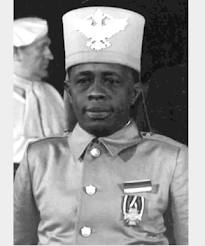 Hussein Mohamed Bayume was a national of the German possession of Tanganyika (now Tanzania). He was a distinguished soldier who served in the German colonial forces in the First World War. Badly wounded, he spent some time in a prison camp in Nairobi. In 1932, Hussein married Maria Schwadner. With it, they had three children. They all lived in Berlin. Already in 1933, the family had lost their German citizenship. At that time, the situation was extremely difficult for blacks in Germany. In 1935, Hussein lost his job server. Then, as a language teacher, he never improved his status. It was very poorly paid. Hussein tried to prove his loyalty by volunteering during World War II. But its proposal will be rejected.
Hussein Mohamed Bayume was a national of the German possession of Tanganyika (now Tanzania). He was a distinguished soldier who served in the German colonial forces in the First World War. Badly wounded, he spent some time in a prison camp in Nairobi. In 1932, Hussein married Maria Schwadner. With it, they had three children. They all lived in Berlin. Already in 1933, the family had lost their German citizenship. At that time, the situation was extremely difficult for blacks in Germany. In 1935, Hussein lost his job server. Then, as a language teacher, he never improved his status. It was very poorly paid. Hussein tried to prove his loyalty by volunteering during World War II. But its proposal will be rejected.
September 1941 will be sentenced Hussein to have had an affair and child with an “Aryan.” There was no trial and no one could even intervene on his behalf. His wife will be forced to divorce. Poor Hussein will be deported to the concentration camp of Sachsenhausen concentration camp where he died Nov. 24, 1944.
- In the Mauthausen concentration camp (Austria)
The atrocities and killings were continuing in the Mauthausen concentration camp. Many witnesses said that:
The only punishment prescribed by the regulations was beating: 25, 50 or 75 shots. Needless to say we rarely resisted more than 50 shots. Many even succumbed before. “
The Mauthausen Concentration Camp is considered by Kogon (E.), Langbein (H.) and Rückerl (A.) as an extermination camp in the strict sense. gas is killing more prisoners than in other concentration camps. They killed them in the main camp in Annex Gusen camp. Specifically, in a gas van that was shuttling between Mauthesen and Gusen.
- CARLOS GREYKEY
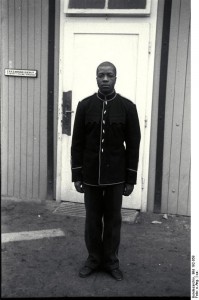 Carlos Greykey was from Fernando Po, in Equatorial Guinea. It was a Spanish black. He lived in Spain, then in France during the Spanish Civil War and finally he found a job in Germany as SS groom Mauthausen. According to testimonies of Spanish survivors, the SS officer Franz Zieres commander was employed as a bellboy and was sporting a livery. Carlos Greykey worked, but he was very afraid of being killed. Carlos was constantly humiliated by the SS officers because of his skin color.
Carlos Greykey was from Fernando Po, in Equatorial Guinea. It was a Spanish black. He lived in Spain, then in France during the Spanish Civil War and finally he found a job in Germany as SS groom Mauthausen. According to testimonies of Spanish survivors, the SS officer Franz Zieres commander was employed as a bellboy and was sporting a livery. Carlos Greykey worked, but he was very afraid of being killed. Carlos was constantly humiliated by the SS officers because of his skin color.
One day a drunken officer passed his hand over his face and asks:
Why are you black? “
Greykey replied:
Because my mom forgot to wash “
Everyone laughed. But Greykey was punished for his insolence.
Later, Carlos fell into disgrace and only the solidarity of other Spanish deportees allowed him to survive the abuse. One of them, who worked in the laboratory at the camp, managed to save the photo (above) that his torturers had taken from him.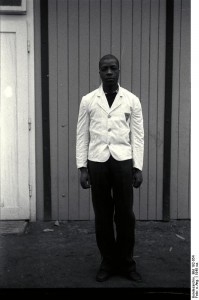
The Black Catalan was one of the lucky survivors of Mauthausen. Constant Mariano says: “Years later, I learned that he had died.” He believes that he lived near the capital, in the Seine-Saint-Denis department. He was married and had children.
- LIONEL ROMNEY
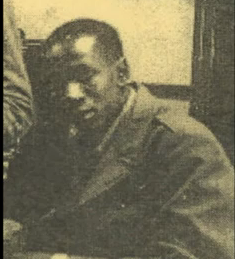
Lionel Romney was a sailor in the US Merchant Marine. He was deported to the Mauthausen concentration camp. Lionel was the only black prisoner. Lucky, he survived this hell.
- In the camp of Buchenwald
- JEAN (MARCEL) NICOLAS
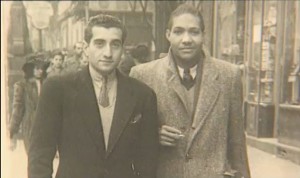 Nicolas Jean is a Haitian living in Martinique. He was employed at the Fort-de-France Hospital. Jean Nicolas was arrested in 1943 and deported to the Buchenwald and Dora-Mittelbau. To survive, Jean Nicolas opts for the ruse.
Nicolas Jean is a Haitian living in Martinique. He was employed at the Fort-de-France Hospital. Jean Nicolas was arrested in 1943 and deported to the Buchenwald and Dora-Mittelbau. To survive, Jean Nicolas opts for the ruse.
At first, he calls himself John Nichols and claims to be an American airman. He hopes to be considered by the SS. With its aptitude for languages, Jean Nicolas quickly manages to talk in German, Russian and Polish.
Secondly, he pretends to be a doctor. And as he has some medical knowledge, he was assigned to the infirmary where he serves as both interpreter and assistant. With this method, Jean will save the lives of many deportees.
But the Germans are not fooled. They ask:
Who is this curious character who claims American doctor?”
 The Germans think he is a spy. Ultimately, Jean Nicolas will share the same fate as his comrades. Despite the horror, he will be released and evacuated to the American Hospital in Neuilly. Unfortunately, the lungs of Jean Nicolas are ravaged by tuberculosis. On 4 September 1945, Jean (Marcel) Nicolas died at the Saint-Antoine hospital in Paris.
The Germans think he is a spy. Ultimately, Jean Nicolas will share the same fate as his comrades. Despite the horror, he will be released and evacuated to the American Hospital in Neuilly. Unfortunately, the lungs of Jean Nicolas are ravaged by tuberculosis. On 4 September 1945, Jean (Marcel) Nicolas died at the Saint-Antoine hospital in Paris.
- RAPHAËL ÉLIZÉ

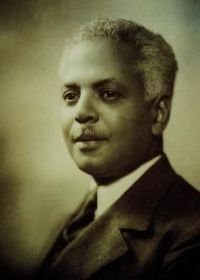 Raphael was born in Martinique, February 9, 1891. Veterinarian training, he was the first black mayor of the hexagon. Specifically, he was mayor of Sable-sur-Sarthe. Unfortunately, he was deposed by the German occupiers in 1940. Raphael, in good patriot, joined the resistance to fight against the Nazis. But he was captured and deported. February 9, 1945, he died in the Nazi camp Buchenwald. For those who want a bit more detail, he died from an accidental bombing of the Allies (British) in Buchenwald.
Raphael was born in Martinique, February 9, 1891. Veterinarian training, he was the first black mayor of the hexagon. Specifically, he was mayor of Sable-sur-Sarthe. Unfortunately, he was deposed by the German occupiers in 1940. Raphael, in good patriot, joined the resistance to fight against the Nazis. But he was captured and deported. February 9, 1945, he died in the Nazi camp Buchenwald. For those who want a bit more detail, he died from an accidental bombing of the Allies (British) in Buchenwald.
- GERT SCHRAMM

Gert Schramm was 15 when he was deported to Buchenwald concentration camp in Germany. He was one of the youngest black prisoner. He survived his detention.
- BIDARD BERNARDIN ( camp of Hinzert-Gross Roven-Buschenwald-Dora )
Bidard Bernardin was born May 20, 1892, at St. Joseph in Martinique. In August 1914, he was mobilized. He will come out of this war without a scratch. And he will receive the Military Cross for his courage at the front. In 1922, he became sergeant in the 7th Regiment of colonial infantry stationed in Bordeaux. He married Laure Lacombe. In the late 30s, Bidard retired and lives quietly with his wife in Bordeaux. On 29 June 1940, Bordeaux was occupied by the Germans. Bidard decided to join the resistance to help. It activates the task and recovered weapons and explosives that he hides in his home. Following a denunciation, the German police searched his home on March 13, 1943. There they find gunpowder and explosives. Poor Bidard! He was arrested and taken to Fort Ha (German district). Then he was transferred to Fresnes prison near Paris (cell 2010). Then, he was deported to the camp in the Rhineland Hinzert under Decrees “Nacht und Nebel”, signed on 7 and 12 December 1941 by Keital. Once again, it is still transferred. This time it is the Gross Rosen camp (in Polish Rogosnica) with 81 registers 532. In Gross Roven, life of the deportees is difficult. On 26 March 1945, it is drained to Buschenwald (number 113096) because of the advance of the Soviet armies. Evacuation is hard to bear because they are deprived of food. They are herded into wagons without roof. His ordeal is not over, Bernardin be transferred to the Dora camp, northwest of Buschenwald. Exhausted, trembling with fever, he died a March 8, 1945 at the Dora camp.
Bidard Bernardin receive the words “Death to France” on March 9, 1948. On February 16, 1954, is credited with the mention of political deportee. etched his name on a marble slab of the memorial of St. Joseph (Martinique), 30 April 2006. For you never forget their courage and sacrifice.
- In the Dachau concentration camp
- JEAN (JHONNY) VOSTE
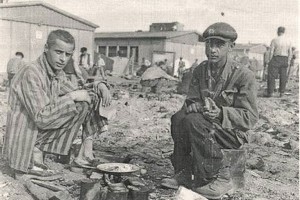
Jean Voste is of Congolese origin. This is a fighter of the Belgian resistance. In May 1942, he was arrested for resistance activities and sabotage. Then he will be deported to the Dachau concentration camp. In the camp, its mission is to stack vitamins funds. Risking his own life, he distributed hundreds of vitamins to the camp inmates. Thanks to his courage, Jean Voste will save many people’s lives. Jean Voste survive the Dachau camp.
The motto of Jean Voste was:
No, you can not have my life. I will fight for it. “
- Dans le camp de Laufen andTittmoning
- JOSEF NASSY (1940-1976)
 Josef Nassy was born in Paramaribo, Suriname (Dutch Guiana). There is a Jewish original black artist of his father’s side who had fled Spain during the Inquisition. At the beginning of World War II, he lived in Belgium. He was now and had the US passport. He was arrested for the foreign enemy ground. Then he was transferred to Beverloo transit camp in Leopoldsburg, Belgium (duration 7 months). Then, he was deported to the German camp Laufen and Tittmoning. During his imprisonment, Josef Nassy painted, drew more than 200 paintings and drawings. Many of his works depict everyday life in the internment camps
Josef Nassy was born in Paramaribo, Suriname (Dutch Guiana). There is a Jewish original black artist of his father’s side who had fled Spain during the Inquisition. At the beginning of World War II, he lived in Belgium. He was now and had the US passport. He was arrested for the foreign enemy ground. Then he was transferred to Beverloo transit camp in Leopoldsburg, Belgium (duration 7 months). Then, he was deported to the German camp Laufen and Tittmoning. During his imprisonment, Josef Nassy painted, drew more than 200 paintings and drawings. Many of his works depict everyday life in the internment camps
Laufen and Tottmoning camps are different from others. Internees are not forced to forced labor. They have enough food because the Red Cross provides them with complete packages and German rations. Josef Nassy also received notebooks, pencils, oil painting from the international YMCA. In addition, Josef Nassy is lucky because the camp commander has took in affection. It encourages him to paint and give art classes to other internal.
May 5, 1945, the third US military frees Laufen. The majority of internal survived Laufen and Tittmoning. One after he was repatriated to Belgium. He ends his works out of Germany and participates in several art exhibits of the Holocaust. In 1992 he donated his collection to the US Holocaust Memorial Museum. A wealthy businessman Sverin Wunderman, art collector, bought many J.Nassy collections in 1984. 19 paintings of Laufen and his convalescence in Belgium are in private hands.
- In the camp of the Charité-sur-Loire
- LEOPOLD SEDAR SENGHOR

Leopold Sedar Senghor was interned at the Charite-sur-Loire. Then in the other concentration cabins to finish at 230 Stag in Poitiers. This terrible place was reserved for colonial troops captured during the war.
An anecdote tells that Nazi soldiers wanted all black African soldiers were killed the same day. Leopold Sedar Senghor managed to escape death by shouting:
Long live France, long live the Black Africa. “
A French officer told the Nazi soldiers that the performance of black African prisoners would be a disgrace for the Aryan race and the German army.
In 1942, he was released for medical reasons. In 1961, he became the first president of Senegal.
2/ Hell prisons of the German Gestapo
- DARWIN NICHOLS (In the Gestapo prison in Butzbach)
Darwin Nichols is a lieutenant and an African-American pilot. He was held in a Gestapo prison in Butzbach.
- VALAIDA SNOW (1904-1956) (In the prison of Copenhagen, Vestre-Fengler)
 Valaida Snow is an African American. She is an American singer and musician of Jazz. It is nicknamed “Little Louie” because his game perfectly mimics Louis Armstrong. She could play ten different instruments. Valaida brakes is a path gradually singing and dancing. She scenes in Los Angeles and Europe. But the Nazis murdered his Dutch manager, who is Jewish. Frightened, she flew to Copenhagen in 1941 to find safety. Unfortunately, this is the year Hitler invaded that country. silverware theft and accused of drug trafficking, she was imprisoned for 18 months in prison in Copenhagen.
Valaida Snow is an African American. She is an American singer and musician of Jazz. It is nicknamed “Little Louie” because his game perfectly mimics Louis Armstrong. She could play ten different instruments. Valaida brakes is a path gradually singing and dancing. She scenes in Los Angeles and Europe. But the Nazis murdered his Dutch manager, who is Jewish. Frightened, she flew to Copenhagen in 1941 to find safety. Unfortunately, this is the year Hitler invaded that country. silverware theft and accused of drug trafficking, she was imprisoned for 18 months in prison in Copenhagen.
But on his return to the USA, it will leave the rumor that she was locked up in a concentration camp. Biographer Mark Miller reveals the truth and says she left after 18 months, exchanged a jazz fan SS officer against a German spy.
Humiliated, she loses all credibility. She tries to revive his career, but in vain. She became a waitress in a seaside resort in the Catskills.
3. Emotional abuse labor camps
- THEODOR WONJA MICHAEL
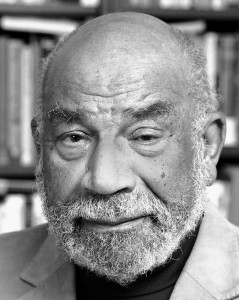
 Theodor Wonja Michael is a German black. He is originally from Cameroon by his father Michael Theophilius Wonja. And German on the side of her mother Martha Wegner. He has three siblings who fled Germany in the direction of France. But, Michael remained in Germany and worked as a bellhop at the Excelsior Hotel Berlin.
Theodor Wonja Michael is a German black. He is originally from Cameroon by his father Michael Theophilius Wonja. And German on the side of her mother Martha Wegner. He has three siblings who fled Germany in the direction of France. But, Michael remained in Germany and worked as a bellhop at the Excelsior Hotel Berlin.
Michael said:
“All those people who had passports of another country left Germany, but we could not leave because he had no country to take us. We were stateless. The UK has closed opportunities for Africans of former German colonies to escape. No one wanted us. It was a trap, yes. We were trapped in Germany. It cost many lives. “
In 1939, he completed his schooling. But he did not have the opportunity to attend training because of the Nuremberg race laws. Then he was fired from his doorman job because of skin color. To make a living, he became a circus performer for colonial films of the UFA and played in Münchhausen with Hans Albers. Over 100 films on the German colonial period were shot in Germany with black actors to whom they gave work and they put safe from persecution.
But Theodore was not fooled:
“We were the negroes we needed. For us it was a matter of life or death. “
Theodore was very proud of being black German. But in Germany, life had become unstable for blacks.
He said: “In Germany, I always stared at, especially when people hear my accent.” He spent his life hiding like other Afro-Germans, because if we caught you, you could be sterilized or executed. The sword of Damocles of sterilization hung over blacks in those years.
Then he added:
As the only child with brown skin, I had no place to hide. The Jews had a Star of David on their clothing, but my appearance distinguished me. The moment, when the Nazis came to power, they ranked categories by the Aryans and non-Aryans. I soon discovered that I was a non-Aryan. “
Theodore says he was afraid to go to the hospital. And he stated:
The flight was impossible, certainly not if you looked like me Those who tried to flee were captured and put directly into a concentration camp Usually they did not survive…”
In 1943, aged 18, he was sent to forced labor in a labor camp near Berlin. Enslaved, humiliated, he worked 72 hours a week in an ammunition factory. It was only in June 1945, he was liberated by the Red Army (Russian soldiers).
- THE SKIRMISHERS SENEGAL
El Hadj Ousmane Aliou Gadio is a former prisoner of war in Germany. It was at Moosburg or was erected the largest labor camp (main camp) for the colonial troops in Bavaria.
Henry Mendy was a prisoner of war in Stalag (labor camp) in France.
Fire Doudou El Hadj Diallo is a survivor of the concentration camps and the massacre of Thiaroye. French soldiers sentenced him to five years in prison he will pass Rebeuss prison in Dakar. They were considered the leader of the revolt of Thiaroye who made a hundred deaths.
4/ The murdered victims of Nazism
- HILARIUS (LARI) GILGES
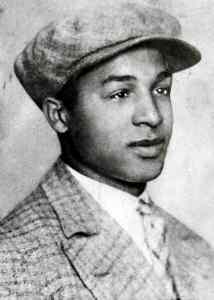
Hilarius Gilges was a dancer. He was murdered by the SS and the Gestapo of Hitler in 1937, at the age of 24 years. Lari Gilges was left black German who resisted against the Nazis. He founded the Northwest Rann, an organization of artists who fought against the Nazis in his hometown of Düsseldorf.
After the war, his wife and children were paid 12,000 marks.
5/ Sterilization victims
- HANS HAUCK
Hans Hauck is an Afro-German, black holocaust survivor and victim of forced sterilization program of Hitler. As a teenager, he was forced to undergo sterilization without anesthesia. Once he received his certificate of sterilization, he signed an agreement that stated he was not allowed to have sexual relations with German women. After he was “free to go”
In addition, blacks sterilization programs were instituted by Dr. Eugen Fischer. It is the highest Nazi geneticist. He developed his racial theories of the German South West Africa (Namibia today) before the First World War. In Namibia, Fischer stated that there were genetic dangers of mixing between German settlers and African women.
In 1936, 800 Métis children will live a living hell. Indeed, one half sent to a concentration camp. While the other half will be sterilized without anesthesia by Dr. Eugen Fisher.
6/ The black-German witnesses living in Nazi Germany
- HANS-JÜRGEN MASSAQUOI (1926-2013)
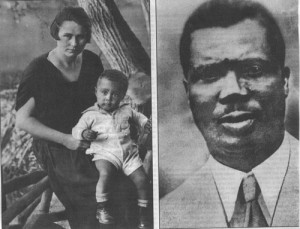
 Hans Massaquoi was born in 1926. It is a mixed race Afro-Germans. He is the son of a German nurse and the Consul General of Liberia Momulu Massaquoi in Hamburg.
Hans Massaquoi was born in 1926. It is a mixed race Afro-Germans. He is the son of a German nurse and the Consul General of Liberia Momulu Massaquoi in Hamburg.
When Hitler came to power, Hans lives in Germany with her family because her health is fragile. After the return of his father Liberia, Hans goes to school like other German boys. Charmed by the Führer, he wants to join the Hitler Youth. But since Hitler came to power, life is difficult for blacks. He was forbidden to join the Hitler Youth movement as his schoolmates.
Because of its color, it is blocked to the secondary and very little chance of having a trade. Hans now lives in fear. He is afraid that the Gestapo knocked at her door. Hans said that the Métis were not so rare.
Hans says he tried to flee Germany. But Britain and France closed their doors for African-German the grounds that they are descendants of a country once ruled by Germany.
Hans will be lucky. It will not be abused. It was just considered a second-class citizen. He soon realized the hypocrisy of racism. In 1947, he moved to Liberia. Then he emigrated to the United States by serving as a paratrooper in the 82nd Airborne Division. Later, he became the editor of Ebony magazine.
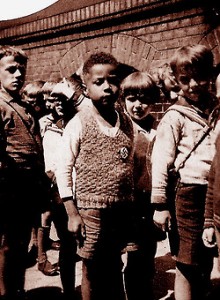 |
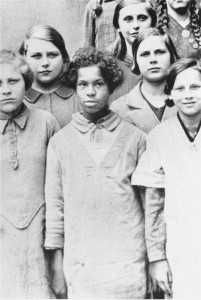 |
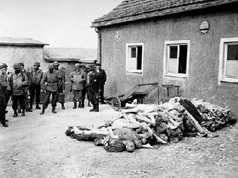 |
Do you know other black victims in the Nazi camps? Share with us your stories!







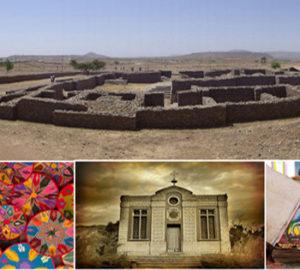
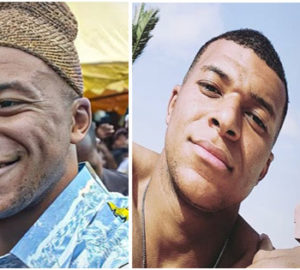
may god give hell to the nazis